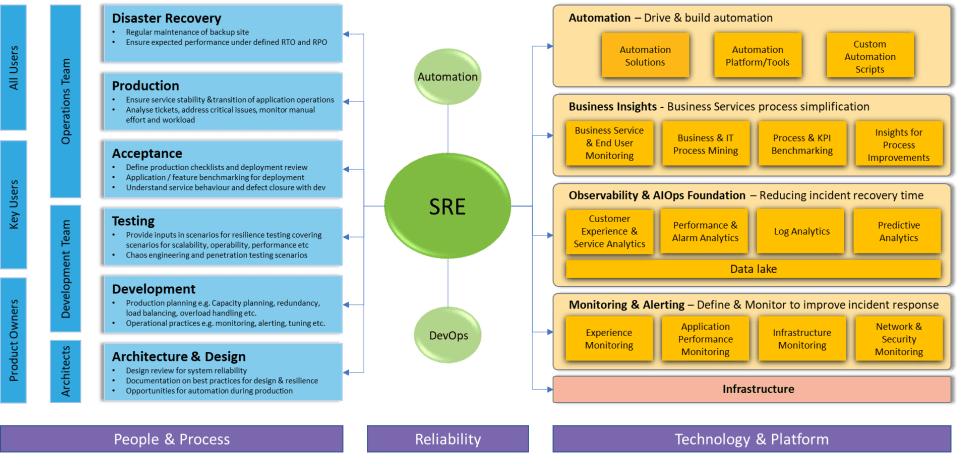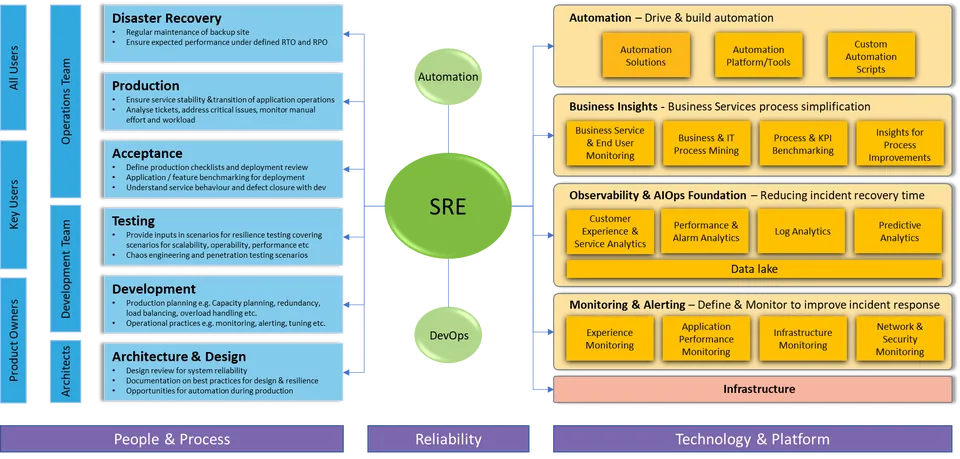Driving resilience in change and operations to adapt to new ways of working – even in uncertain times
Blog: Capgemini CTO Blog
Even in today’s volatile markets, digitization and technology adoption remain at an all-time high – and businesses have seen a huge spike in online transactions, which has not just impacted operations, but consumer experience as well. Organizations are now trying to find the optimal balance between the scale of their operations and the cost of running them. As we work through this pandemic, digital transformation continues to be important – but resilience has an equally valuable role to play in increasing stability and driving your desired future change.
The ramifications of the pandemic have forced many businesses to look at closing shop completely or scaling back operations. As the pandemic continues, there’s been a shift in consumer behavior and how business is conducted. One of the key challenges for organizations is to hold onto customers and address their needs – while innovating and transforming themselves. This needs to be done by increasing operational efficiency and keeping costs to a minimum.
Key trends in making operations effective
The need to make operations more effective in these times has led to vendor consolidation in managing application landscapes, with an objective to reduce costs and redundancies. To increase agility, there has been steady focus on ways of working, with many organizations adopting Agile and implementing DevSecOps across the application lifecycle. Companies are also looking to boost operational efficiencies further by leveraging automation and artificial intelligence capabilities to support operations.
These trends have been adopted by organizations based on their individual current states of applications and maturity in managing operations. In this context, modernizing the application estate (in part or completely) to a hybrid cloud model has been a common business strategy. As organizations increase cloud adoption, they are also improving their operating models by leveraging new and emerging technologies.
Increasing application resilience
All the above trends and strategies are excellent, as long as they are effective in enabling the business to provide better value to customers. Value can be in the form of response time of the service being provided, or reduced customer complaints stemming from minimal application failures, or even keeping the service available.
This is where service reliability practices come in to ensure consistent performance of applications in order to keep the lights on. It ensures that the services maintain a consistent and expected behavior, while focusing on the long-term viability of application operations.
Service Reliability Engineering (SRE): Infusing reliability across the entire software lifecycle
Service Reliability Engineering (SRE) teams ensure effective operations and act as the glue that connects different teams (i.e., product-focused Agile development and operations teams or DevOps and automation teams) in order to provide resilient operations. SRE is still a relatively new concept, which is seeing increased adoption across different industry segments. It is transforming operations by looking at application maintenance through a completely different lens – a wide lens – that takes a panoramic view of your operations (see below).

The above diagram depicts how SRE teams, in conjunction with DevOps and Automation, can infuse reliability across the entire software lifecycle on an ongoing basis. During their engagement, they build platforms, leverage tools and solutions, or even develop scripts as and when required.
Driving resilient IT and change through effective risk management, automation, and standardization with ADMnext and SRE
Capgemini’s ADMnext offering equips organizations with the ability to respond to fluctuating business environments and can help you apply SRE at the heart of you change process to increase stability and effectively transform your business. ADMnext is a full stack of business-focused, transformational, and adaptive ADM services, underpinned by a host of organizational assets and enablers. Based on your organization’s maturity and goals, Capgemini can help you in transforming your operations in this rapidly changing environment – providing resilience and increasing operational efficiencies with risk management, automation, and standardization:
- Risk measurement and monitoring – In a product-driven operations approach, it is important to understand the goals of the product or service. These goals can then be translated into technical objectives, which can be measured in the form of one or more performance indicators. This process helps in determining and measuring the risk or cost of failure in operations, as and when any changes are done to the application. It also helps in determining the amount of focus required on the application to ensure a predictable response.
- Making operations intelligent with automation and AI-Ops – Making an application observable (monitoring, logging, alerting, etc.), would only inform what is happening within an application or across a set of applications. But the important task is to act on this information and ensure such failures or changes in application behavior do not occur. Automation is one aspect that can be leveraged to ensure that there are fewer manual interventions required. Automation can be enhanced further by AI-Ops, which leverages machine learning algorithms that can help predict and determine the cause of such failures, provide recommendations on resolutions, and augment an increase in operational efficiencies.
- Platform standardization across applications– Any enterprise landscape consists of diverse applications varying from home-grown applications to COTS products across on-premise to cloud – and with different service models from hosted to managed services. These applications require a variety of skillsets at different levels, leading to increases in operational costs. If we want to determine the cost of running operations, or at least make this predictable, standardization across the tools and technologies can help here in increasing operational efficiencies.
Managing operations is an ongoing process. Capgemini’s ADMnext and SRE can help provide the required processes for service reliability and collaboration across teams in Agile, along with swift solutions to ensure that end customers are getting new capabilities and features with the same performance and consistency. Capgemini’s ADMnext SRE-capable teams are supported by our architecture community and automation platform (CIAP). They enable all the above levers and provide the necessary acceleration required for transforming service delivery and operations.
To learn more about Capgemini’s ADMnext and how we can help you implement SRE to drive resilient IT and change, contact me here.
